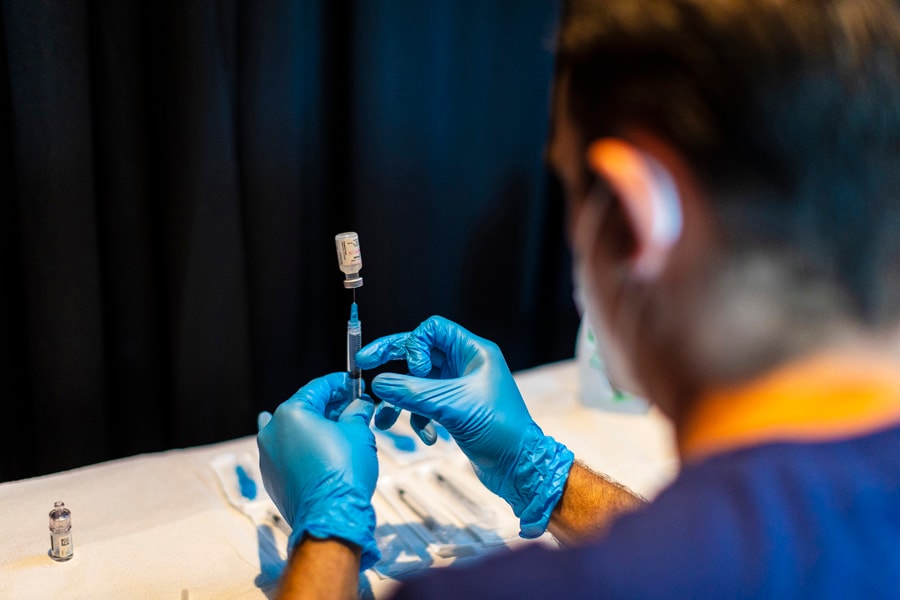
Why you might not be returning to the office until next year
Companies have new variables to consider including evidence that the effectiveness of vaccines, while still strong, may be waning and burned-out workers who are vaccinated at varying rates
 A health care worker prepares a dose of Pfizer’s COVID-19 vaccine in Miami, Aug. 5, 2021. The New York Times compiled a list of when large companies expect to have employees back at their desks and what their vaccine requirements will be. (Saul Martinez/The New York Times).
A health care worker prepares a dose of Pfizer’s COVID-19 vaccine in Miami, Aug. 5, 2021. The New York Times compiled a list of when large companies expect to have employees back at their desks and what their vaccine requirements will be. (Saul Martinez/The New York Times).
Last week, Uber executives huddled on a nighttime video call to make a difficult decision. They considered whether the ride-hailing company should join a growing list of companies once again delaying their return-to-office dates. Soon after, they announced that Uber would fully reopen its offices on Jan. 10, postponed from Oct. 25.
“I’ve been in HR for 30 years, and this is probably the hardest crisis I’ve had to deal with,” said Laura Faith, the senior director of people experience and operations at Uber. “This really is about life or death and health and safety.”
In the nearly 18 months since the pandemic first forced companies to send their employees to work from home, the date companies have planned to bring workers back to offices has changed again and again. First it was January, a full year after the coronavirus first surfaced in China. January slipped to July, as tens of millions of people lined up across America to be vaccinated.
But then the surge of vaccinations peaked, and the highly contagious delta variant of the coronavirus drove another spike in cases. For many companies, September became the new July.
Now September is out as an option, and it is anybody’s guess when workers will return to their offices in large numbers.
©2019 New York Times News Service







